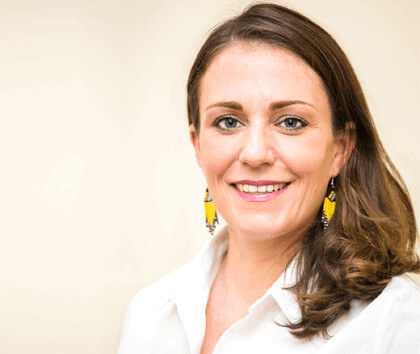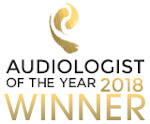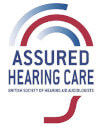The Hearing Knowledge Hub
-
Investigating the mystery of the ‘bio-duck’
Since the 1960s, a strange, repetitious quacking noise has been frequently heard in the Southern Ocean. Dubbed the ‘bio-duck’, it’s been puzzling marine biologists and underwater acoustic experts for decades. The sound was first recorded in the early 1980s in the South Fiji Basi – four bursts of quack-like noises which scientists had also reported in the waters around New Zealand and Australia. Ross Chapman from the University of Victoria is an expert in underwater acoustics and wants to understand the biological function of the sound. He and his team have recorded these sounds using an acoustic antenna, an array of hydrophones towed behind a ship. This whales species’ songs…
-
Changing Perceptions
New photography – changing perceptions on hearing loss. We’re all influenced by the images we see, particularly in the age of social media. The photography used by brands shapes how we perceive the products we use – from clothes and household products to spectacles and even hearing aids. So-called ‘lifestyle’ images, showing people using such products, can make us gravitate towards a particular product or run a mile. Changing perceptions of hearing aids – and who wears them. For many years, the photography used to show people using hearing aids has influenced people’s decisions around whether or not to choose to use hearing technology. Photos used by hearing aid brands…
-
Ringing the bell on Tinnitus
Today marks the end of Tinnitus Week. This year Tinnitus UK, the charity that advocates for people with tinnitus and is working for a cure, is marking the awareness week with the publication of a new report revealing the current status of tinnitus care in the UK. In November 2024 the charity surveyed audiologists working in the UK and their feedback highlighted three key points. Tinnitus patients face unacceptable delays with waits for an ENT referral stretching up to three years in parts of the UK. Many audiologists lack confidence treating tinnitus patients due to insufficient training and supervision. Up to 25% of tinnitus-specific appointments use assessment techniques that are not…
-
A new form of brain training for improving listening.
The festive period and new year are often about meeting new people at events and parties – often in noisy situations. If you or a loved one live with hearing loss, understanding what those people are saying to you – particularly if they’re not familiar to you – can be a struggle. But a new study from researchers at University College London (UCL) suggests that practising listening to voices of people you regularly encounter could improve your communication in everyday environments. A new form of brain training The UCL study tested whether learned voices were easier to understand than unfamiliar voices in 20 older (55-73 years) and 20 younger (18-34 years)…
-
Quietware dinner sets for people with hyperacusis
Quietware crockery for people with noise sensitivity. Christmas is the time for family get-togethers, often with loved ones staying with relatives for extended periods over the festive season. But with so many people under the same roof, the potential for irritating noise increases. We’re talking TVs and sound systems on at full volume, and even the packing and unpacking of dishwashers at unpopular times of the day… Spare a thought for people who live with hyperacusis, or noise-induced pain. Hyperacusis can be caused by exposure to loud noise, be the result of a head injury or an inner ear viral infection, or occur alongside other conditions such as Bell’s palsy…
-
Hearing checks to be the norm in schools for SEND kids
Hearing tests for children with special educational needs and disabilities SEND The NHS will be offering ear, eye and dental checks to children and young people with special educational needs in their schools from next year. The scheme will be offered at all residential special schools and colleges in England and will reach 18,000 pupils. Students with learning disabilities and some autistic young people can struggle to say when they experience problems. This new move aims to catch important health diagnoses by bringing the checks to the students in familiar surroundings. A pilot has shown that when the checks are carried out by staff they already know and trust it…
-
Listening to music with hearing loss
Enjoying music when you have a hearing loss. Some tips for you: If you’ve watched the progress of contestant Tasha Ghouri on the BBC’s Strictly Come Dancing, you’d never guess that she has been deaf since birth. Tasha received a cochlear implant aged five, but she also lip reads and uses BSL. While Tasha appears to be navigating the dance show with ease, she has admitted to concentration fatigue in the rehearsal room with the need to lip read her dance partner Aljaž Škorjanec, and she experiences bad migraines due to the effects of the magnets that are part of the implant. A cochlear implant often processes rhythms better than…
-
Loop Earplugs – the latest cool accessory
Earplugs – The latest cool accessory! Over seven million Brits suffer from tinnitus, 1.5 million of them severely. And earlier this year the World Health Organisation stated that over one billion young adults worldwide are at risk of permanent, avoidable hearing loss due to unsafe listening practices. A lot of the problem is music. The volume of the music at an average club comes in at around 100dB and 110dB is typical for live music. Even a classical orchestra can reach 94dB, and a rock band can peak as high as 125dB. But at 100dB, you can only be exposed for 15 minutes before you’ll likely to start to cause…
-
The ‘the cocktail party effect’ solved with AI
Have you ever found yourself at a party with lots of background noise but still been able to follow what another guest is saying to you? It’s not easy, and there’s a phrase for this situation and the hearing challenges it poses: ‘the cocktail party effect’. But people with normal hearing and good auditory processing are actually pretty good at listening to one person while filtering out other people’s voices. For a long time the same couldn’t be said of hearing technology. Delivering suitably clear speech in noise is something the top end hearing aid models have only been able to achieve in the last few years. And how about…
-
Signapse uses AI generated images to translate train announcements into British Sign Language (BSL)
A recently launched app called Signapse uses AI generated images to translate train announcements into British Sign Language (BSL). It seems that not a month goes by now without a new app being launched to support deaf and hard of hearing people enjoy more accessible travel, take a more active part in public events, or receive better healthcare treatment. The rise of artificial intelligence – or AI – has a lot to do with it. While many people have understandable concerns about the uses of AI, there are certainly many areas where it can be a major force for good. Take a recently launched app called Signapse, which uses AI…













